
"Cinderella", or "The Little Glass Slipper", is a folk tale with thousands of variants that are told throughout the world. The protagonist is a young girl living in forsaken circumstances that are suddenly changed to remarkable fortune, with her ascension to the throne via marriage. The story of Rhodopis, recounted by the Greek geographer Strabo sometime between 7 BC and 23 AD, about a Greek slave girl who marries the king of Egypt, is usually considered to be the earliest known variant of the Cinderella story.

"Sleeping Beauty", also titled in English as The Sleeping Beauty in the Woods, is a fairy tale about a princess cursed by an evil fairy to sleep for a hundred years before being awakened by a handsome prince. A good fairy, knowing the princess would be frightened if alone when she wakes, uses her wand to put every living person and animal in the palace and forest asleep, to awaken when the princess does.

"Rapunzel" is a German fairy tale most notably recorded by the Brothers Grimm and published in 1812 as part of Children's and Household Tales. The Brothers Grimm's story was developed from the French literary fairy tale of Persinette by Charlotte-Rose de Caumont de La Force (1698), which itself is an alternative version of the Italian fairy tale Petrosinella by Giambattista Basile.

In fairy tales, a fairy godmother is a fairy with magical powers who acts as a mentor or parent to someone, in the role that an actual godparent was expected to play in many societies. In Perrault's Cinderella, he concludes the tale with the moral that no personal advantages will suffice without proper connections.
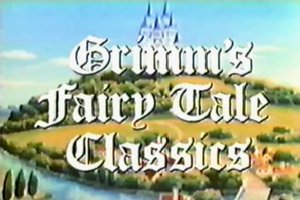
Grimm's Fairy Tale Classics, also known as Grimm Masterpiece Theater in the original version and The Grimm's Fairy Tales, is a Japanese anime anthology series by Nippon Animation based on the Grimms' Fairy Tales.
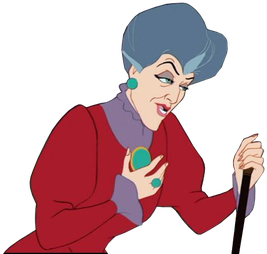
Lady Tremaine is a fictional character who appears in Walt Disney Productions' animated film Cinderella (1950) and its direct-to-video sequels Cinderella II: Dreams Come True (2002) and Cinderella III: A Twist in Time (2007). In the original film, Lady Tremaine is voiced by American actress Eleanor Audley, who would later voice Maleficent, the evil fairy, in Sleeping Beauty (1959) and Madame Leota in The Haunted Mansion. For the sequels and subsequent film and television appearances, Audley was succeeded by American actress Susanne Blakeslee who also currently voiced Maleficent, Cruella de Vil from 101 Dalmatians, and the Evil Queen from Snow White and the Seven Dwarfs. She is given the title of Lady in the original film.
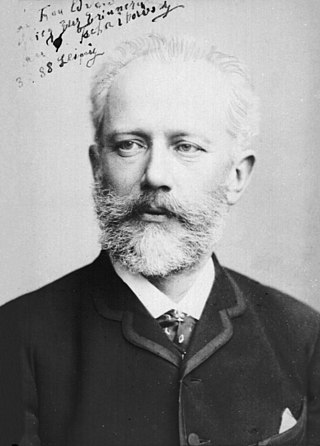
The Sleeping Beauty is a ballet in a prologue and three acts to music by Pyotr Ilyich Tchaikovsky, his Opus 66, completed in 1889. It is the second of his three ballets and, at 160 minutes, his second-longest work in any genre. The original scenario was by Ivan Vsevolozhsky after Perrault's La belle au bois dormant, or The Beauty Sleeping in the Forest; the first choreographer was Marius Petipa. The premiere took place at the Mariinsky Theatre in St. Petersburg on January 15, 1890, and from that year forward The Sleeping Beauty has remained one of the most famous of all ballets.

Disney Princess, also called the Princess Line, is a media franchise and toy line owned by the Walt Disney Company. Created by Disney Consumer Products chairman Andy Mooney, the franchise features a lineup of female protagonists who have appeared in various Disney franchises.

"The Blue Bird" is a French literary fairy tale by Madame d'Aulnoy, published in 1697. An English translation was included in The Green Fairy Book, 1892, collected by Andrew Lang.

The Fairytale Forest is a 15-acre (61,000 m2) wooded section of the amusement park Efteling in the Netherlands, where a number of well-known fairy tales and fairy tale figures are depicted by animatronics and buildings. Most of the figures are inspired by the Brothers Grimm, Hans Christian Andersen, and Charles Perrault.
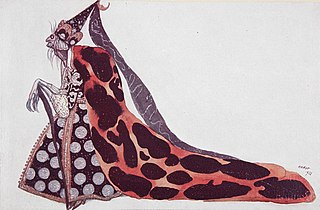
The Wicked fairy is the antagonist of Sleeping Beauty. In some adaptations, she is known as Carabosse. The most notable adaptation of the character is Maleficent, a Disney villain who appeared in various Disney media, beginning with the 1959 Walt Disney film Sleeping Beauty.
Jetlag Productions was an American animation studio that created several animated films based on popular children's stories and original productions. The movies were animated in Japan by KKC&D Asia and Animal Ya, among other South Korean companies. They were released directly to VHS through the GoodTimes Home Video distribution company.

Sleeping Beauty is a 1987 American/Israeli fantasy film, part of the 1980 film series Cannon Movie Tales. It is directed by David Irving and stars Tahnee Welch, Morgan Fairchild, Nicholas Clay and Sylvia Miles. It is a contemporary version of the classic tale of Sleeping Beauty of the Brothers Grimm and Charles Perrault. Like the other Cannon Movie Tales, the film was filmed entirely in Israel.
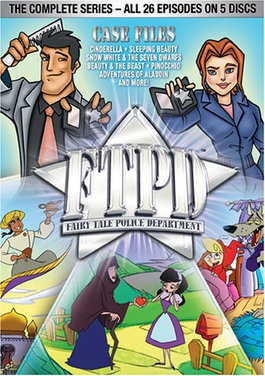
Fairy Tale Police Department is a German animated series, produced by the company Yoram Gross-EM.TV in co-production with EM.TV & Merchandising AG, Victory Media Group, and Talit Communications. It aired on Seven Network at various times. It offers a new perspective on classic fairy tales through the central characters Johnny Legend and Christine Anderson. They are magic police officers who restore balance to society.
Grimmtastic Girls is a series of eight children's books written by Joan Holub and Suzanne Williams and published between 2014 and 2016 with Scholastic Inc. The themes and characters of the stories stem from Grimm's Fairytales. Each story is told from the perspective of a different fairytale character including Cinderella, Little Red Riding Hood, Rapunzel, Snow White, Sleeping Beauty, and Goldilocks. The series is set at the boarding school Grimm Academy in the country of Grimmlandia where these brave girls deal with life in middle school, are chosen by magic charms, and work to foil dastardly plots of the E.V.I.L. Society.
"The Tower" is the fourteenth episode of the third season of the American fantasy drama series Once Upon a Time, and the show's 58th episode overall, which aired on March 23, 2014.

Regal Academy is an Italian animated series co-created by Iginio Straffi and Joanne Lee. The series was produced by the Rainbow studio, which at the time was co-owned by Straffi and Viacom. Viacom's Nickelodeon channels broadcast the series worldwide. Rai YoYo aired the series in Italy, and it premiered on Rai YoYo on May 22, 2016, and on Nickelodeon U.S. on August 13, 2016.

Once Upon a One More Time is a jukebox musical based on songs popularized by Britney Spears. Set in a fantasy storybook realm, the plot follows numerous fairy-tale characters transformed by a feminist awakening.
















